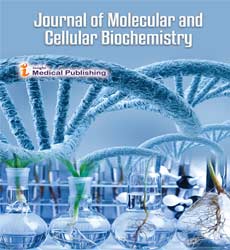The application of the biopesticides and its uses
Mohamed Rashed *
Department of Biochemistry, King Saud University Medical City, Riyadh, Saudi Arabia
- *Corresponding Author:
- Mohamed Rashed
Department of Biochemistry, King Saud University Medical City, Riyadh, Saudi Arabia
E-mail: Rashedm@au.edu.sa
Received Date: September 6, 2021; Accepted Date: September 20, 2021; Published Date: September 27, 2021
Citation: Rashed M (2021) The Application of Bio Pesticides and its Uses. J Mol Cell Biochem Vol. 5 No.4:3
Description
Pesticides generated from natural elements such as animals, plants, microorganisms, and minerals are known as bio pesticides. Bio pesticides have the potential to play a significant role in pest management that is both sustainable and ecologically friendly. Chemical mechanisms of action are used by a wide range of bio insecticides. This paper looks at three types of bio pesticides: a fungus for weed control, beneficial bacteria for fungal and bacterial disease management, and a virus for insect pest control. Microbial pesticide is one of the many forms of bio pesticides available. The active component in microbial pesticides is a microbe (bacteria, fungus, virus, or protozoan).
Pesticides generated from natural sources are known as bio pesticides. Although each active component is somewhat specialized for its target insect, microbial pesticides may control a wide range of pests. There are fungi that control weeds and fungi that kill specific insects, for example. Bacillus thuringiensis, or Bt, subspecies and strains are the most extensively used microbial insecticides. Each strain of these bacteria generates a unique combination of proteins that kills just one or a few closely related insect larvae. While certain Bt compounds are effective against moth larvae on plants, others are only effective against flies and mosquito larvae. The target insect species are determined by whether the particular Bt produces a protein that can bind to a larval gut receptor, thereby causing the insect larvae to starve.
Bio herbicidal activity in Phoma macrostoma
A bio herbicide is a weed-control pesticide with a biological basis. Rather from relying on man-made chemicals, bioherbicides are weed-control products that use naturally existing enemies. This is significant since biological control agents often have far fewer and milder environmental impacts than manufactured pesticides. Chemicals generated from microorganisms such as fungus, bacteria, or protozoa, as well as phytotoxic plant residues, extracts, or single compounds obtained from other plant species, are examples of bioherbicides. The fungal genus Phoma has a diverse range of species with saprophytic, phytopathogenic, and, more recently, bio herbicidal properties.
Based on the frequency of reports on this species, Phoma spp. has a lot of promise for bio herbicidal action against infestations and weed damage. Foliar bleaching and necrosis of sensitive broadleaf weeds are signs of herbicidal action. Phoma sp. has been linked to herbicidal action. Conidia and/or mycelium were administered to connected or detached leaves or soil planted with broadleaved weeds and analysed using traditional plant disease symptomology, such as necrosis, chlorosis, and macerations. P. macrostoma may colonies a wide variety of plant families, however only broadleaved plants were susceptible to Phoma, exhibiting severe chlorosis, especially on new growth broad leaves plant.
Advantages of Bio pesticides
In general, bio pesticides are less harmful than conventional pesticides. In contrast to broad-spectrum, conventional pesticides, which can impact animals as diverse as birds, insects, and mammals, bio pesticides usually affect just the target pest and closely related organisms. Bio pesticides are generally effective in little amounts and disintegrate fast, resulting in reduced exposures and avoiding the environmental concerns that conventional pesticides create. Bio pesticides can significantly reduce the usage of traditional pesticides while maintaining excellent crop yields.
Open Access Journals
- Aquaculture & Veterinary Science
- Chemistry & Chemical Sciences
- Clinical Sciences
- Engineering
- General Science
- Genetics & Molecular Biology
- Health Care & Nursing
- Immunology & Microbiology
- Materials Science
- Mathematics & Physics
- Medical Sciences
- Neurology & Psychiatry
- Oncology & Cancer Science
- Pharmaceutical Sciences
